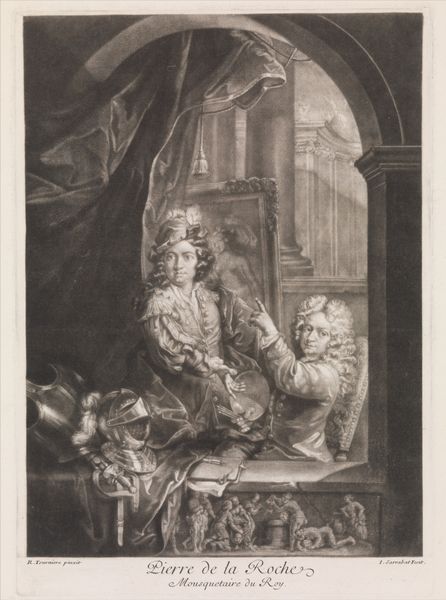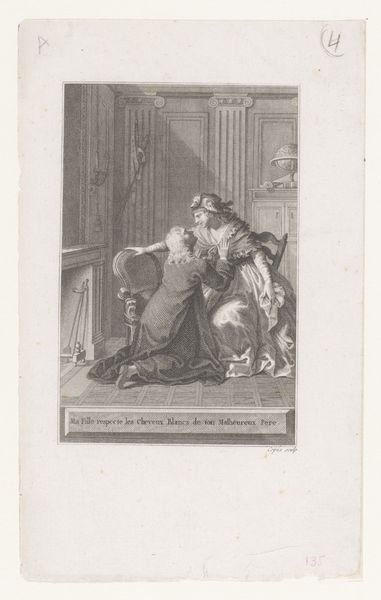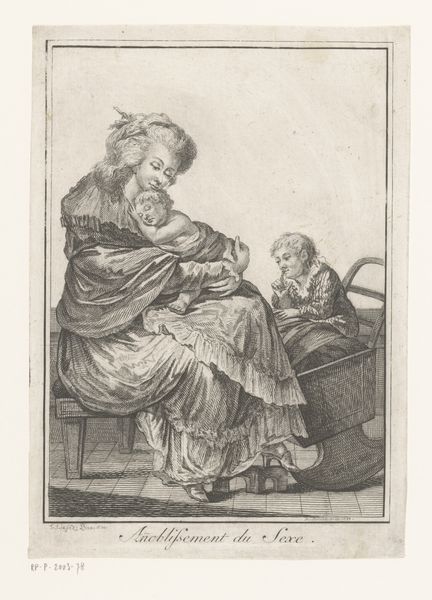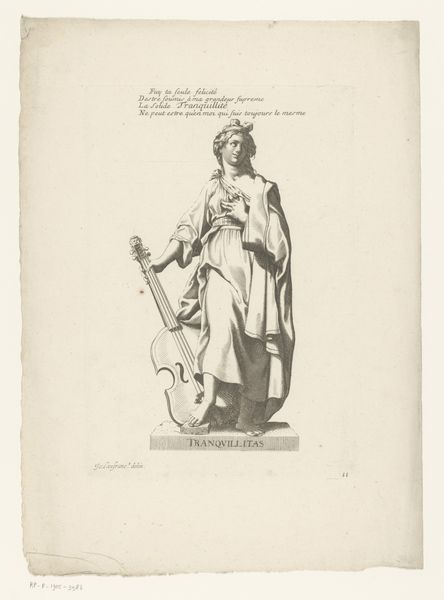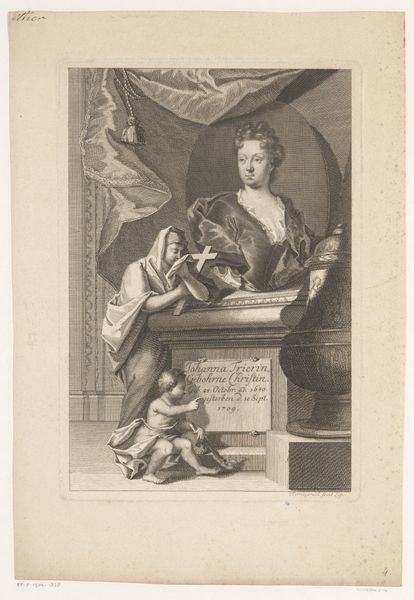
engraving
#
portrait
#
baroque
#
old engraving style
#
caricature
#
limited contrast and shading
#
portrait drawing
#
genre-painting
#
engraving
Dimensions: height 170 mm, width 133 mm
Copyright: Rijks Museum: Open Domain
Curator: Oh, this piece, a 17th-century engraving called "Jonge vrouw bespeelt een orgel," attributed to the Monogrammist A, is quite intriguing, isn’t it? It's a beautiful example of Baroque genre-painting. Editor: It really is. My first thought is that she seems so lost in her music, doesn't she? Almost as if the instrument and the sound, the action of pressing, become an extension of her soul. Curator: Absolutely. Contextually, it's crucial to consider the role of women in music during the Baroque period. Music offered one of the few socially acceptable avenues for female artistic expression, often intertwined with domesticity and religious devotion. The organ itself, you'll notice, isn't placed within a church setting but within a more intimate, perhaps even private space. This invites discussion on female agency and the limited domains in which it could manifest. Editor: Right, because you feel the angel looking up to her as her protector and guide through that moment. Like, 'Go on, child; let that emotion breathe!' The engraving style adds so much texture, but somehow, it almost flattens her too, turning her into an idea rather than a complete human. She feels trapped inside the sound. Is that the idea of gender, in her society? Curator: A fascinating read! That sense of flatness speaks volumes about the technical constraints and aesthetic choices typical of engravings, but more subtly, the limited contrast suggests to me the social limitations imposed upon women of the time. The soft, subdued shading, while characteristic of the medium, might subtly reflect a deliberate toning down, if you like, of female assertiveness to fit societal expectations. Or maybe I read too much theory. Editor: No way, you can't ever overanalyze art, especially an artist hidden only by their initials! Look at that expression—vague as it may be. The Monogrammist's depiction of her isn't saccharine. It's thoughtful. Curator: Agreed. There's a certain realism, a quiet dignity, that transcends the potential pitfalls of idealizing her image. The instrument itself becomes an extension of her self-expression, albeit within prescribed social boundaries. And it leads us back to questions of women and selfhood. It is through her artistry and expression, or a reading of its lack of vibrancy, that we get to see something else... Editor: Yes, but maybe this opens up a door that gives an idea, centuries later, of a woman in charge of her moment. Music becomes a tiny form of revolution in that respect. Beautiful!
Comments
No comments
Be the first to comment and join the conversation on the ultimate creative platform.

